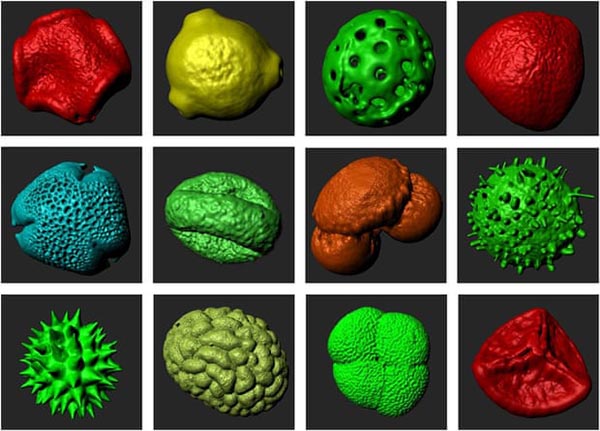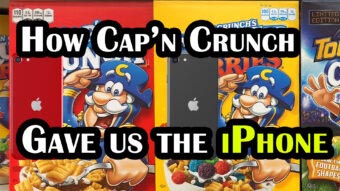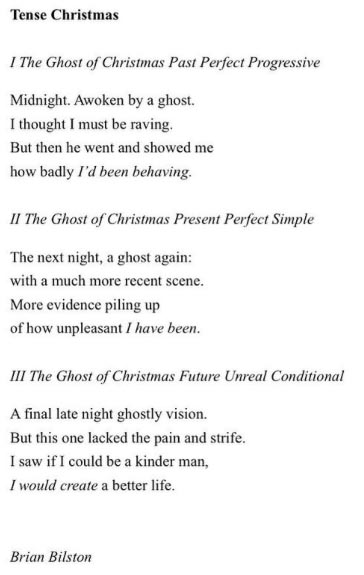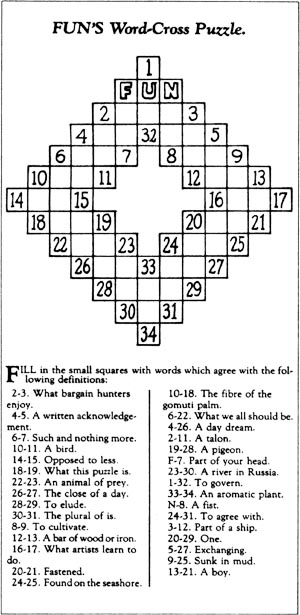Your Friday Buddhist Monk Cover of “Enter Sandman”
Check out his other minimalist classic rock covers.
You know you’re tired when you feel personally attacked by the tone of an advent calendar pic.twitter.com/z5zgKMBGGK
— Maisie Adam (@MaisieAdam) December 11, 2020
Suit to a T
Why just buy a T-shirt off the rack when you can have one custom-fitted to your precise measurements? Via The Verge, Amazon has launched Made for You, a customized clothing service.
The first product is a $25 Made for You T-shirt available in a variety of colors, fabrics, necklines, and shirt / sleeve lengths.
Amazon Made for You requires two head-to-toe photos taken by the Amazon app, showing the front and back of your torso. Then, after entering your height, weight, and body type, Amazon will create your custom avatar. From there you can build custom T-shirts complete with a personalized name tag.
This “virtual body double” can be deleted at any time, and apparently Amazon deletes the photos after the avatar has been created.
The launch of Made for You follows Amazon’s discontinued Echo Look experiment that involved standalone cameras that offered fashion advice, and arrives just as the company’s $99.99 Halo tracker becomes more widely available to track your body fat in 3D.
And who wouldn’t want that? Sounds like it could be a really upsetting videogame.
Hat Crime
Do you ... do you not know how hats work? https://t.co/NWRNSB5JVP
— Robb Badlam (@BuckyUnderbelly) December 12, 2020
Graphene!
Was it a good week for graphene news? It’s always a good week for graphene news! Via our Granite State graphenologist, the University of Nottingham has “cracked the conundrum of how to use inks to 3D-print novel electronic devices with useful properties, such as an ability to convert light into electricity.”
The study shows that it is possible to jet inks, containing tiny flakes of 2D materials such as graphene, to build up and mesh together the different layers of these complex, customised structures.
Using quantum mechanical modelling, the researchers also pinpointed how electrons move through the 2D material layers, to completely understand how the ground-breaking devices can be modified in future.
The study, “Inter?Flake Quantum Transport of Electrons and Holes in Inkjet?Printed Graphene Devices,” appears in the journal Advanced Functional Materials.
Up Your Nose
Elsewhere in 3D printing news, via the Guardian, a new project is focusing attention on something that gets up everyone’s nose at some point: pollen. Creating giant, 3D printed pollen grains is a project being developed by paleoecologist Oliver Wilson. And why?
“Being able to identify pollen is important for many reasons,” he says. Because they can survive millions of years and are tiny and tough, they can help track changing climate patterns, reveal the quality of honey and even provide forensic evidence at crime scenes. “But I love seeing what else people do with the models,” he says. Already they have been used by bee ecologists in Brazil, US school teachers and Irish archaeologists, among others.
...
He has since created a fast, free and accessible way for anyone to print outsize replicas of pollen grains, magnified 2,500 times, via his online 3D Pollen Project. So far, pollen from 35 plant species has been scanned and modelled and he is ready to get to work on the next 100 species sent to him from around the world, including from Europe, Colombia, Tanzania, Ecuador and Mongolia.

Photograph: Tony Hayes/Cardiff University
Now that’s nothing to sneeze at.
TweeTarts
Today is a big day. After years of asking for it, I finally now have
— Dieter Bohn (@backlon) December 13, 2020
...
Tweets but edible pic.twitter.com/7Q0eemUzdm
Code Comfort
Here’s one for Heidi Tolliver-Walker. Does the name Masahiro Hara ring a bell? It should: he invented the QR code. An employee of the automotive parts company Denso Wave in the 1990s, Hara had received numerous requests to come up with a way to manage their auto parts inventories. One day, while playing the game Go, the arrangement of black and white stones gave him the idea for the QR code, originally used to track auto parts. The Guardian this week talked to Hara about how the QR code has come—as Heidi explained on Wednesday—to play an important role during the COVID pandemic.
Since early this year it has been deployed in everything, from customer check-ins at restaurants to digital menus and contactless payments, and is used in contact-chasing apps in several countries, including the system used by the NHS.
...
“I’m really pleased that it’s being been used to help improve people’s safety,” said Hara, who scans up to 20 times at weekend, mainly in newspapers and magazines. “Back in 1994 we were focused on its use in the economy … we never thought it would be used for something like this.”
Lost in Translation
Festive Corn Maze Misread By Aliens As Declaration Of Intergalactic War https://t.co/Qk6M9NFsn3 pic.twitter.com/zEA8Bj1Doc
— The Onion (@TheOnion) October 1, 2020
Robo Pet
Do you or a loved one—such as a grandparent—live alone in the time of the pandemic? And would a live pet be more of a hindrance than a help? Well, why not try a pet robot? Says Vox:
Even before Covid-19 came around, robots like these were being introduced in nursing homes and other settings where lonely people are in need of companionship — especially in aging societies like Japan, Denmark, and Italy. Now, the pandemic has provided the ultimate use case for them.
...
Robots designed to play social roles come in many forms. Some seem like little more than advanced mechanical toys, but they have the added capacity to sense their environment and respond to it. Many of these mimic cute animals — dogs and cats are especially popular — that issue comforting little barks and meows. Other robots have more humanoid features and talk to you like a person would. ElliQ will greet you with a friendly “Hi, it’s a pleasure to meet you” and tell you jokes; SanTO will read to you from the Bible and bless you; Pepper will play music and have a full-on dance party with you.
Companies have also designed robots to help with the physical tasks of caregiving. You can get Secom’s My Spoon robot to feed you, Sanyo’s electric bathtub robot to wash you, and Riken’s RIBA robot to lift you out of bed and into a chair. These robots have been around for years, and they work surprisingly well.
Wait until the robot uprising, though.
Dim Bulbs
I'm just gonna tag @internetofshit and smile. #googledown pic.twitter.com/BYdzrZyTm7
— Morten Jakobsen (@jakeobsen) December 14, 2020
Tongue-Tied
Here’s an interesting visual test via Core77. Pasted below are examples of 50 written languages, five of which are fake. Can you tell which are real and which are contrived? (Well, OK, all languages are contrived, but you know what we mean.) “Two of them are shorthand-style phonetic alphabets designed for English; one of them is an ideographic writing system designed for international use, independent of any specific language; one of them was created for a sci-fi series, and one for a fantasy movie.”

The link also has a version with all the languages labeled, which only makes it slightly easier. Can you get all five?
Quotable Quotes
If you read foreign novels or travel internationally (probably more the former these days) you may be aware that different countries have different kinds of quotation marks. We use “ ” here in the US, in the UK they are partial to single quotes ‘ ’, and elsewhere in Europe they use things like guillemets « » or other variations on the quotation mark. (It’s not always a function of language.) Jakub Marian has identified five different forms of quotation marks and has drawn a map of where they are generally used—although the Internet is starting to standardize on American-style double quotation marks.

Gone Fishing
You've heard of Elf on a Shelf. Well get ready for pic.twitter.com/A3PEp5mrIr
— He Called Me Greenhorn (@WhatsAGreenhorn) December 12, 2020
Crunch Time
We are fans of the website Today I Found Out, and a recent installment was provocatively titled “How Cap’n Crunch Gave the World the iPhone and the Surprisingly Heated Debate Over Whether He’s Really a Captain.”(OK, we’re easily provoked...) There was apparently quite an outcry about Cap’n Crunch’s uniform:
The U.S. Navy follows a strict code defining how uniforms are to reflect rank. The most readily apparent way for the general public to identify a captain would be the number of stripes displayed on an individual’s sleeve. Per regulation, captains wear four stripes, commanders three, lieutenants two, and ensigns one, with additional thinner stripes for grades between. This is where the question of Mr. Crunch’s proper rank becomes uncertain. Over the years, he has variously appeared with anywhere from one to three stripes. Even when apparently serving as Ensign Crunch, however, he has continued to erroneously make use of the title Cap’n.
We suspect that most naval personnel do not wear their eyebrows on their hats, so maybe the number of stripes on a breakfast cereal mascot’s uniform is not the most flagrant of violations.

As for the thing about the iPhone, it’s a long story but it starts with a prize that was once given away inside a box of Cap’n Crunch cereal: a whistle.
the plastic instrument happened to be able to produce a tone at exactly 2600 hertz. This is important because AT&T phone systems functioned on a series of tones that indicated which line was to perform a given action. Producing the right tone at the right time gave one control over part of the system, such as the ability to make free long-distance calls.
A culture called “phreaking” developed around the manipulation of this infrastructure and phreakers eventually started selling what became known as “blue boxes,” electronic devices that could emit the tones needed to take advantage of AT&T phone lines. Two of these blue box purveyors? Steve Wozniak and Steve Jobs, who would later found Apple Computer.
The Scary Door
Hot take: Freelancers should be able to bill $150/hr for the time it takes to try to navigate your "supplier portal."
— Eva Holland (@evaholland) December 14, 2020
Heavy Cats
Want to check out some cool jazz cats? No, we mean real jazz cats. That is, a live kitten cam in which the meows have been transformed into saxophone sounds via Imitone, software that can convert a human (or feline) voice into any musical instrument.
Left to Their Own Devices
If sax kittens are not your thing, how about ELECTRONICOS FANTASTiCOS!, a Japanese band whose instruments are repurposed consumer electronics, such as “Electric Fan Harp, CRT-TV Drums, Air Conditioner Harp etc.” It sounds kind of like The Residents meet Kraftwerk covering New Order.
Scrooged
In 2007, a US theatre company staged ‘A Klingon Christmas Carol’, performed in Klingon with English supertitles. (‘Bah, humbug!’ is ‘BaQa' in Klingon)
— Quite Interesting (@qikipedia) December 11, 2020
Image: Commedia Beauregard pic.twitter.com/CHPIH2NeMo
Ghost Writing
Via Boing Boing, some clever Christmas poems from Brian Bilston. “Fitting with the theme of 2020, Bilston has written a new holiday poem titled ‘Tense Christmas.’ It riffs on the idea of the ghosts from A Christmas Carol, but instead makes them a bit more, errm, complex.”

Fir-mware
You bought a Christmas tree with firmware!!!!!!!!!!!!!!!asdffjsksm https://t.co/X2gZP27IMw
— Internet of Shit (@internetofshit) December 14, 2020
Yule Love It
Well, this seems appropriate. Via Laughing Squid, this holiday season, you can replace the traditional Yule Log with a hour-long video of a Dumpster fire. Created by the Canadian ad agency AM/FM, “2020 Xmas Dumpster Fire” is an hour-long burn of an actual Dumpster fire, “a perfect way to celebrated the end of such a historically trying year.”
Priced to Sell
— Amy Fowler (@AmyAbroad) September 22, 2020
All of here at WhatTheyThink wish you the best of holiday seasons and we’ll see you in the New Year!
This Week in Printing, Publishing, and Media History
December 14
1902: The Commercial Pacific Cable Company lays the first Pacific telegraph cable, from San Francisco to Honolulu.
1903: The Wright brothers make their first attempt to fly with the Wright Flyer at Kitty Hawk, N.C.
1948: Thomas T. Goldsmith Jr. and Estle Ray Mann are granted a patent for their cathode-ray tube amusement device, the earliest known interactive electronic game.
1972: Apollo astronaut Eugene Cernan is the last person to walk on the moon.
December 15
1791: The United States Bill of Rights becomes law after it is ratified by the Virginia General Assembly.
1939: Gone with the Wind (the highest inflation-adjusted grossing film) receives its premiere at Loew's Grand Theatre in Atlanta, Ga.
Old Man Remembers When Things Cost Roughly The Same As Now After Adjusting For Inflation https://t.co/0pXrvcbiHB pic.twitter.com/Ziwncdhfmw
— The Onion (@TheOnion) December 6, 2020
December 16
1775: English novelist Jane Austen born.
1901: Beatrix Potter privately publishes The Tale of Peter Rabbit. It goes on to sell over 45 million copies worldwide.
1917: British science fiction writer Arthur C. Clarke born.
1928: American science fiction writer Philip K. Dick born.
December 17
1790: The Aztec calendar stone is discovered at El Zócalo, Mexico City.
1892: The first issue of Vogue is published.
1903: The Wright brothers make the first controlled powered, heavier-than-air flight in the Wright Flyer at Kitty Hawk, N.C.
1937: American novelist John Kennedy Toole (A Confederacy of Dunces) born.
1989: The Simpsons first premieres on television with the episode “Simpsons Roasting on an Open Fire.”
December 18
1892: Premiere performance of The Nutcracker by Pyotr Ilyich Tchaikovsky in Saint Petersburg, Russia.
1958: Project SCORE, the world’s first communications satellite, is launched.
December 19
1776: Thomas Paine publishes one of a series of pamphlets inThe Pennsylvania Journal entitled “The American Crisis.”
1843: The novella A Christmas Carolby Charles Dickens is first published. Bah!
Literary Scholars Discover First Draft Of ‘A Christmas Carol’ Where All 4 Ghosts Show Up At Once And Just Beat The Shit Out Of Scrooge https://t.co/rVGwFhotjz pic.twitter.com/WLaaQ277v3
— The Onion (@TheOnion) December 11, 2020
1932: BBC World Service begins broadcasting as the BBC Empire Service.
December 20
1948: English keyboard player and producer Alan Parsons born.
1946: The film It’s a Wonderful Life is first released in New York City.
1946: Israeli-English magician, “psychic,” and spoon-mangler Uri Geller born.
1971: The international aid organization Doctors Without Borders is founded by Bernard Kouchner and a group of journalists in Paris, France.
December 21
1879: World premiere of Henrik Ibsen’s A Doll’s Houseat the Royal Theatre in Copenhagen, Denmark.
1913: Arthur Wynne’s “word-cross,” the first crossword puzzle, is published in the New York World. The Oreo cookie had been introduced a year earlier. Coincidence? (See if we can spot the cruciverbalists out there.)

1937: Snow White and the Seven Dwarfs, the world’s first full-length animated feature, premieres at the Carthay Circle Theatre.
1940: The late, great American composer, singer-songwriter, guitarist, and producer Frank Zappa born. Watch out where the huskies go.
December 22
1808: Ludwig van Beethoven conducts and performs in concert at the Theater an der Wien, Vienna, with the premiere of his Fifth Symphony, Sixth Symphony, Fourth Piano Concerto (performed by Beethoven himself) and Choral Fantasy (with Beethoven at the piano).
1880: English novelist and poet George Eliot dies (b. 1819).
1891: Asteroid 323 Brucia becomes the first asteroid discovered using photography.
1936: Irish science historian and author James Burke (Connections) born.
2001: Richard Reid attempts to destroy a passenger airliner by igniting explosives hidden in his shoes aboard American Airlines Flight 63; as a result, air travelers passing through security will have to take off their #$^&@! shoes in perpetuity. So thanks for that, Mr. Reid.
December 23
1815: The novel Emma by Jane Austen is first published.
1893: The opera Hansel and Gretel by Engelbert Humperdinck is first performed.
1913: The Federal Reserve Act is signed into law by President Woodrow Wilson, creating the Federal Reserve System.
1947: The transistor is first demonstrated at Bell Laboratories.
December 24
1818: The first performance of “Silent Night” takes place in the church of St. Nikolaus in Oberndorf, Austria.
1822: English poet and critic Matthew Arnold born.
1851: The Library of Congress in Washington, D.C., burns.
1863: English author and poet William Makepeace Thackeray dies (b. 1811).
1871: The opera Aida premieres in Cairo, Egypt.
1906: Reginald Fessenden transmits the first radio broadcast consisting of a poetry reading, a violin solo, and a speech.
1968: The crew of Apollo 8 enters into orbit around the Moon, becoming the first humans to do so. They performed 10 lunar orbits and broadcast live TV pictures.
December 25
336: First documented Christmas celebration in Rome.
1642: English physicist and mathematician Isaac Newton born.
1758: Halley’s Comet is sighted by Johann Georg Palitzsch, confirming Edmund Halley’s prediction of its passage. This was the first passage of a comet predicted ahead of time.
1815: The Handel and Haydn Society, oldest continually performing arts organization in the United States, gives its first performance.
1890: American publisher, co-founder of Reader’s Digest Lila Bell Wallace born.
1924: American screenwriter and producer Rod Serling born.
1938: Czech author and playwright Karel ?apek dies (b. 1890).
2004: The Cassini orbiter releases Huygens probe which successfully lands on Saturn’s moon Titan on January 14, 2005.
December 26
1791: English mathematician and engineer, inventor of the Difference engine Charles Babbage born.
1871: Thespis, the first Gilbert and Sullivan collaboration, debuts. It does modestly well, but the two would not collaborate again for four years and the score has been lost.
1931: American librarian and educator, creator of the Dewey Decimal Classification Melvil Dewey dies (b. 1851).
1963: The Beatles’ “I Want to Hold Your Hand” and “I Saw Her Standing There” are released in the United States, marking the beginning of Beatlemania on an international level.
1966: The first Kwanzaa is celebrated by Maulana Karenga, the chair of Black Studies at California State University, Long Beach.
December 27
1831: Charles Darwin embarks on his journey aboard HMS Beagle, during which he will begin to formulate his theory of evolution.
1845: Journalist John L. O'Sullivan, writing in his newspaper the New York Morning News, argues that the United States had the right to claim the entire Oregon Country “by the right of our manifest destiny.”
1927: Kern and Hammerstein’s musical play Show Boat, considered to be the first true American musical play, opens at the Ziegfeld Theatre on Broadway.
1932: Radio City Music Hall, “Showplace of the Nation,” opens in New York City.
1941: English singer-songwriter and keyboard player Mike Pinder born.
1968: Apollo 8 splashes down in the Pacific Ocean, ending the first orbital manned mission to the Moon.
December 28
1895: The Lumière brothers perform for their first paying audience at the Grand Cafe in Boulevard des Capucines.
1895: Wilhelm Röntgen publishes a paper detailing his discovery of a new type of radiation, which later will be known as x-rays.
1902: The Syracuse Athletic Club defeated the New York Philadelphians, 5–0, in the first indoor professional football game, which was held at Madison Square Garden.
1922: American publisher and producer Stan Lee born.
1945: American novelist and journalist Theodore Dreiser dies (b. 1871).
1958: “Greatest Game Ever Played”: Baltimore Colts defeat the New York Giants in the first ever National Football League sudden death overtime game at New York’s Yankee Stadium.
1973: The United States Endangered Species Act is signed into law by Pres. Richard Nixon.
December 29
1170: Thomas Becket, Archbishop of Canterbury, is assassinated inside Canterbury Cathedral by followers of King Henry II; he subsequently becomes a saint and martyr in the Anglican Communion and the Catholic Church. Chaucer’s The Canterbury Tales are set during a pilgrimage to his shrine.
1766: Scottish chemist and the inventor of waterproof fabric Charles Macintosh born.
1851: The first American YMCA opens in Boston, Mass.
1916: A Portrait of the Artist as a Young Man, the first novel by James Joyce, was first published as a book by an American publishing house B. W. Huebschis after it had been serialized in The Egoist (1914–15).
1926: Austrian poet and author Rainer Maria Rilke dies (b. 1875).
1936: American actress and producer Mary Tyler Moore born.
1941: English singer-songwriter and flute player Ray Thomas born.
1949: KC2XAK of Bridgeport, Connecticut becomes the first Ultra high frequency (UHF) television station to operate a daily schedule.
1989: Czech writer, philosopher, and dissident Václav Havel is elected the first post-communist President of Czechoslovakia.
December 30
1865: English author and poet, Nobel Prize laureate Rudyard Kipling born.
1896: Canadian ice hockey player Ernie McLea scores the first hat-trick in Stanley Cup play, and the Cup-winning goal as the Montreal Victorias defeat the Winnipeg Victorias 6–5.
1927: The Ginza Line, the first subway line in Asia, opens in Tokyo, Japan.
1983: American computer programmer and businessman, co-founder of Instagram Kevin Systrom born.
December 31
1759: Arthur Guinness signs a 9,000 year lease at £45 per annum and starts brewing Guinness.
1790: Efimeris, the oldest Greek newspaper of which issues have survived till today, is published for the first time.
1878: Karl Benz, working in Mannheim, Germany, filed for a patent on his first reliable two-stroke gas engine, and he was granted the patent in 1879.
1879: Thomas Edison demonstrates incandescent lighting to the public for the first time, in Menlo Park, New Jersey.
1907: The first New Year’s Eve celebration is held in Times Square (then known as Longacre Square) in Manhattan. No word if Dick Clark was hosting.
1955: General Motors becomes the first U.S. corporation to make over US$1 billion in a year.
1956: The Romanian Television network begins its first broadcast in Bucharest.
1959: American singer-songwriter and guitarist Paul Westerberg born.
1961: RTÉ, Ireland’s state broadcaster, launches its first national television service.
1980: Canadian philosopher and theorist Marshall McLuhan dies (b. 1911).
1983: The AT&T Bell System is broken up by the United States Government.
1998: The European Exchange Rate Mechanism freezes the values of the legacy currencies in the Eurozone, and establishes the value of the euro currency.
2019: The World Health Organization was informed of cases of pneumonia with an unknown cause, detected in Wuhan. This later turned out to be COVID-19, the cause of the COVID-19 pandemic. (Whatever happened with that?)
Anything catch your eye “around the Web”? Share it with us at [email protected].














